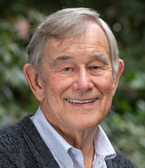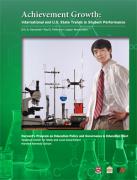We provide the first experimental estimates of the long-term impacts of a voucher to attend private school by linking data from a privately sponsored voucher initiative in New York City, which awarded the scholarships by lottery to low-income families, to administrative records on college enrollment and degree attainment. We find no significant effects on college enrollment or four-year degree attainment of the offer of a voucher.
Working Papers
In the first study, using a randomized experiment to measure the impact of school vouchers on college enrollment, Matthew Chingos and Paul Peterson, professor of government at Harvard University, examine the college-going behavior through 2011 of students who participated in a voucher experiment as elementary school students in the late 1990s. They find no overall impacts on college enrollment but do find large, statistically significant positive impacts on the college going of African-American students who participated in the study.
To find out the extent of U.S. progress toward closure of the international education gap, we provide estimates of learning gains over the period between 1995 and 2009 for the United States and 48 other countries from much of the developed and some of the newly developing parts of the world. We also examine changes in student performance in 41 states within the United States, allowing us to compare these states with each other as well as with the 48 other countries.
At a time of persistent unemployment, especially among the less skilled, many wonder whether our schools are adequately preparing students for the 21st-century global economy. Despite high unemployment rates, firms are experiencing shortages of educated workers, outsourcing professional-level work to workers abroad, and competing for the limited number of employment visas set aside for highly skilled immigrants. As President Barack Obama said in his 2011 State of the Union address, “We know what it takes to compete for the jobs and industries of our time.
Maintaining our innovative edge in the world depends importantly on developing a highly qualified cadre of scientists and engineers. To realize that objective requires a system of schooling that produces students with advanced math and science skills. To see how well the U.S. as a whole, each state, and certain urban districts do at producing high-achieving math students, the percentage of U.S.
The School District of Philadelphia, in the summer of 2002, at the request of the State of Pennsylvania, asked for-profit and non-profit managers to participate in a substantial restructuring of its lowest-performing schools under the overall direction of the Philadelphia School Reform Commission (SRC). Thirty elementary and middle schools were contracted out to for-profit management organizations; 16 schools were contracted out to non-profit organizations.
In 1997, the School Choice Scholarships Foundation (SCSF) announced that it would provide 1,300 scholarships so that children of low-income families in grades K–4 in the New York City public schools could transfer to private schools. Each scholarship, or “voucher,” was worth up to $1,400 annually and could be used for up to four years at a religious or a secular school. The SCSF received applications from more than 20,000 students from February through April 1997. From the pool of applicants, scholarship recipients were selected in a lottery held in May 1997.
In the fall of 1997, the Washington Scholarship Fund (WSF) announced the expansion of a privately funded school voucher program in Washington, D.C. originally established in 1993. In the spring of 1998, over six thousand students from public and private schools applied to the new program; of these initial applicants, over one thousand were offered scholarships—809 of whom were attending public schools at the time.
In the spring of 1998, Parents Advancing Choice in Education (PACE), a privately funded non-profit corporation, offered low-income parents within the Dayton metropolitan area an opportunity to apply for a scholarship to help defray the costs of sending their child to private schools in Dayton and other parts of Montgomery County, Ohio. All students from low-income families entering a grade between kindergarten and twelfth grade were eligible. PACE offered scholarships to 515 students who were in public schools at the time and 250 students who were already enrolled in private schools.
In 1999, the Children’s Scholarship Fund (CSF) announced that it would award scholarships enabling low-income families across the United States to send their children in grades K-8 to the private school of their choice. The families of over 1.25 million children applied for scholarships; 40,000 were awarded. Because more families applied than could receive scholarships, recipients were chosen by lottery, enabling the research methodology of a randomized field trial to evaluate the program.
In 1998, the Bay Area Scholarships for Inner-city Children (BASIC) Fund was created to give low-income families scholarships to attend registered private schools in Marin, San Francisco, or San Mateo County. This evaluation presents the results of a survey of BASIC Fund scholarship parents and students who moved from public schools to private schools.
In the late 1990s, three privately-funded school voucher programs for students from low-income families were established in the Dayton, Ohio metropolitan area, New York City, and Washington, D. C. The New York City program, sponsored by the School Choice Scholarships Foundation (SCSF), was announced in the fall of 1996; students receiving vouchers entered private schools in the fall of 1997. Two additional programs were created one year later, one in the Dayton metropolitan area, sponsored by Parents Advancing Choice in Education (PACE), and one in D.
In early 1998 the Parents Advancing Choice in Education (PACE ) program offered low-income families an opportunity to win scholarships to send their children to private schools in Dayton and other parts of Montgomery County, Ohio. Students entering kindergarten through twelfth grade qualified. PACE offered scholarships to 515 students who were in public schools and 250 students who were already enrolled in private schools. The program began in September of 1998. This evaluation examines the program’s impact on those students in grades 2-8 who had previously been attending public schools.

